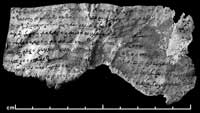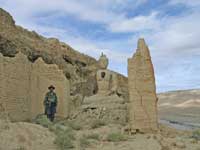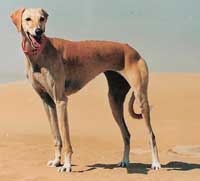| From the Editor |
1 |
| |
 
|
News from Ancient Afghanistan, |
| by Nicholas Sims-Williams |
5 |
| During the last fifteen years or so many inscriptions and documents have come to light in Afghanistan. This article draws attention to the most important new discoveries, which include material covering all periods from the 4th century B.C. to the 8th century C.E., concentrating in particular on a group of 7th-8th century Bactrian documents from the kingdom of Gozgan (Juzjan). |
|
|
|
| |
| Bamiyan 2006: The Fifth Excavation Campaign of Prof. Tarzi's Mission, by Zemaryalai Tarzi |
10 |
| A report on the 2006 excavation season at Bamiyan, carried out by the team of the Dégation Archéogique Françse en Afghanistan under the supervision of Professor Zemaryalai Tarzi. The excavations devoted particular attention to the sites of the Royal City and the Eastern Monastery, uncovering in the former what appear to have been workshops for glass production, and in the latter the remains of several stupas, some containing reliquaries. |
| |
| Balkh and the Plains of Turkestan, by Frank Harold, with photographs by Ruth Harold |
27 |
| An introduction to Balkh, Mazar-i Sharif and Tashkurgan, with a description of these historic cities in Afghanistan as they appeared in 1970. Balkh was one of the important political and commercial sites along the Silk Road; Mazar-i Sharif is known today especially its shrine to the venerated Shiite religious figure Hazrat Ali. |
| |
| Further Evidence for the Interpretation of the 'Indian Scene' in the Pre-Islamic Paintings at Afrasiab (Samarkand), |
| by Matteo Compareti |
32 |
| Among the most famous Sogdian sites from the seventh century CE is Afrasiab, on the outskirts of Samarkand, where in the 1960s a structure containing an elaborate mural was discovered. The interpretation of this painting, which seems to depict official ceremonies involving the Sogdian ruler Varkhuman, is a matter of substantial disagreement among scholars. This article focuses in particular on the images on the north wall of the room, where, as the author argues, there is substantial evidence to connect the imagery with the Indian ashvamedha ceremony. |
| |
 
|
Mapping Early Buddhist Sites in Western Tibet: Recent Findings from Tsamda County, China, |
| by Karl E. Ryavec |
43 |
| The historic sites in Western Tibet are still little known, and many of them are only now in the process of being located. This article is a preliminary report on the results of a project to map the sites in a way that may serve as the basis for further exploration to discover yet others. Among the discoveries so far are striking early Buddhist sculpture and murals in Buddhist cave temples. |
|
| |
| Han Lacquerware and the Wine Cups of Noin Ula, by François Louis |
48 |
| The abundant finds of Han Chinese lacquer work in Xiongnu graves have yet to be systematically analyzed. This article provides a preliminary analysis of such evidence, the focus being lacquered cups, some of which were uncovered as early as the 1920s in the excavations at Noin Ula in northern Mongolia and others excavated as recently as 2005 in the Tamir River Valley. The evidence is of considerable interest for documenting Han-Xiongnu relations and helping to establish the chronology of the graves. |
| |
| Trade and Commerce on the Silk Road after the End of Mongol Rule in China, Seen from Chinese Texts, by Ralph Kauz |
54 |
| Although popular perceptions of the Silk Road exchange across Eurasia see it ending with the disintegration of the Mongol Empire, there is substantial evidence of continuing Chinese exchange with Central and Western Asia throughout the Ming period-that is, right down to the 17th century. Ming relations with the Timurids were particularly intense in the late 14th and first half of the 15th centuries. This article documents this interaction, paying particular attention to the evidence contained in the Chinese sources, some of which may pertain not to official missions but to 'fake embassies.' |
| |
 
|
Hunting Hounds along the Silk Road-Which Way Did They Go?, |
| by Sir Terence Clark |
60 |
| Among the more interesting aspects of exchange across Eurasia is the history of domesticated animals. The development and uses of specialized breeds is the subject of ongoing research such as that contained in this article. The author is contributing to the tracing of hunting dogs (especially those related to the Saluki) across Eurasia. Part travelogue, this article relates his search for evidence about the continuing breeding of indigenous species in the territories of former Soviet Central Asia and in Western Xinjiang. |
|
| |
| A Thousand Years on the Silk Road: Epic Poetry and Music from the Kyrgyz Republic, |
| by Rysbai Isakov, Akylbek Kasabolotov, and Helen Faller |
65 |
| An interview with Kyrgyz epic singers Rysbai Isakov and Akylbek Kasabolotov, in connection with their 2006 tour in the United States as part of the Kyrygz Cultural Performances Project. They talk about their training and understanding of their art and offer their impressions of America. |
| |
, Vol. 4, No. 2 (Winter 2006-2007),


